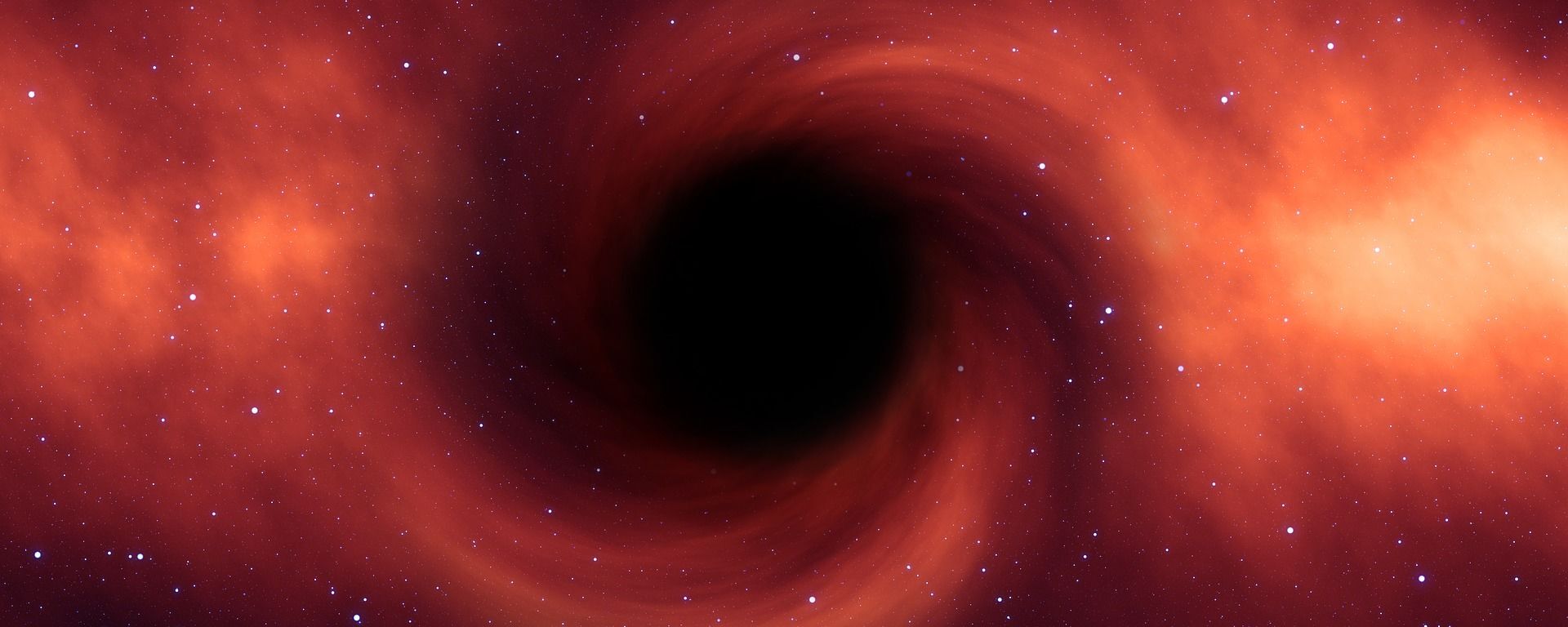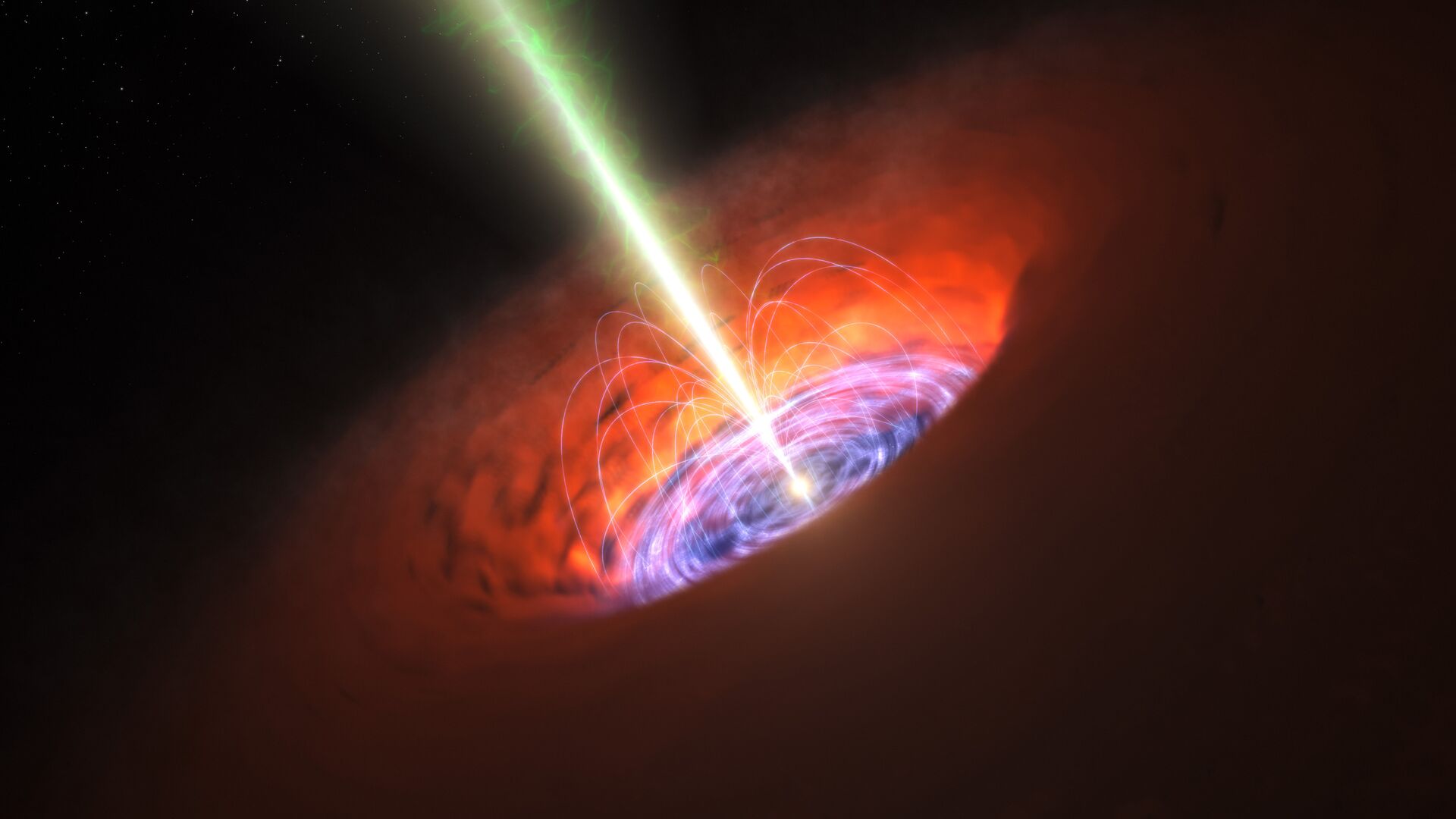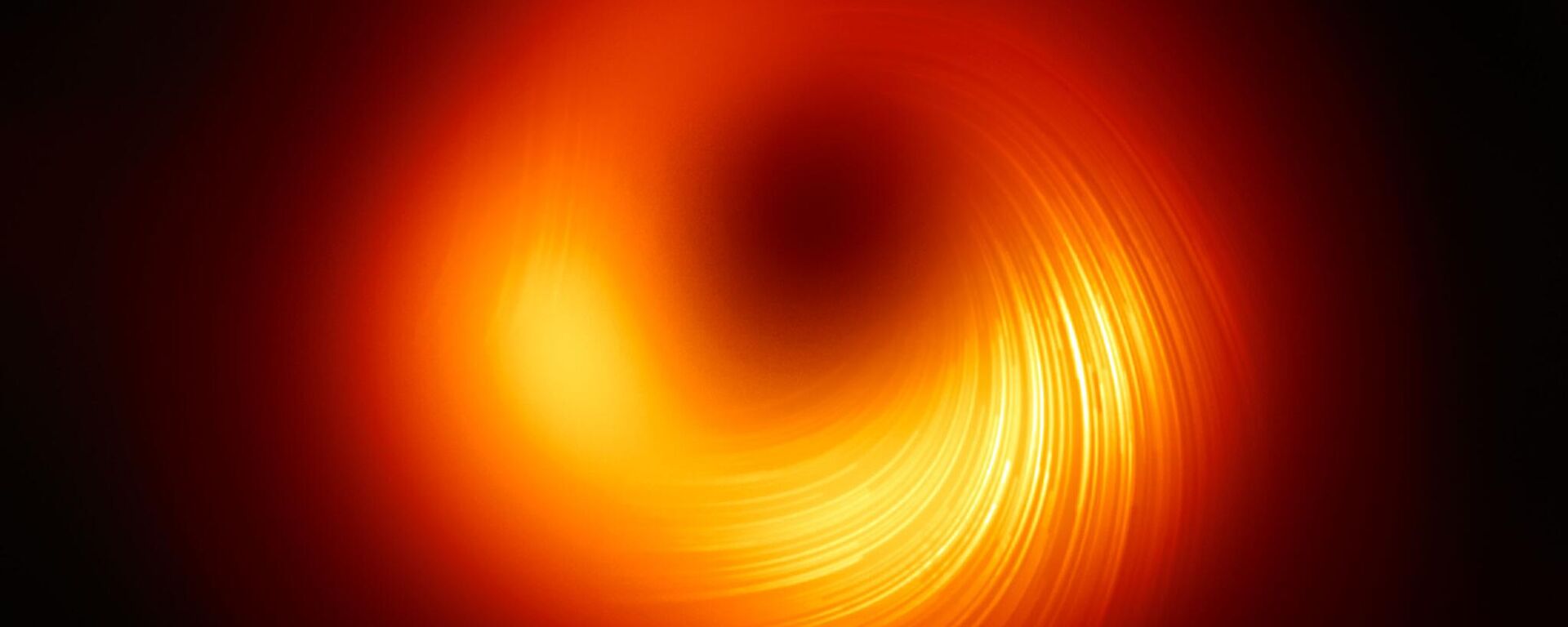https://sputnikglobe.com/20230907/researchers-accidentally-make-first-ever-measurement-of-black-holes-swirling-accretion-disk-1113190223.html
Researchers Accidentally Make First-Ever Measurement of Black Hole’s Swirling Accretion Disk
Researchers Accidentally Make First-Ever Measurement of Black Hole’s Swirling Accretion Disk
Sputnik International
A group of astronomers studying a supermassive black hole had to double-check their work after making an astounding discovery: they had found a way to measure the diameter of a black hole’s accretion disk.
2023-09-07T21:21+0000
2023-09-07T21:21+0000
2023-09-07T21:19+0000
beyond politics
black hole
gemini observatory
astronomy
radiation
https://cdn1.img.sputnikglobe.com/img/107390/35/1073903541_0:287:5000:3100_1920x0_80_0_0_07b6a7fdfdb41d8cc6b9df0e06c39eb6.jpg
A group of astronomers studying a supermassive black hole had to double-check their work after making an astounding discovery: they found a way to measure the diameter of a black hole’s accretion disk.A black hole has gravity so strong that even light, the fastest thing in the universe, cannot escape from it. However, outside the point of no return - called an event horizon - objects remain quite visible. Surrounding many black holes is a vast swirl of dust and gas called an accretion disk, which shines brightly as it is pulled in toward the black hole.These disks are easy to spot, since they emit a wide range of radiation, including in the spectrum of visible light, which we can detect on Earth. Essentially, the astronomers were monitoring light from the black hole designated III Zw 002, a supermassive black hole anchoring the center of a galaxy 22 million light-years away. The team was using the Gemini Near-Infrared Spectrograph (GNIRS) from the Gemini North telescope in Hawaii, and measured a slightly wider range of light wavelengths than is typical. Because GNIRS can detect emissions of different wavelengths of light simultaneously, it captured the elusive signal for the far side of the accretion disk without the astronomers realizing they were even collecting the extra data.Expecting to see a single double-peak formation in the data, the scientists were stunned to find a second set of double-peaks.“We didn't know previously that III Zw 002 had this double peaked profile, but when we reduced the data we saw the double peak very clearly,” Alberto Rodríguez-Ardila, an astronomer at the Canary Islands Astrophysics Institute and co-author of the study, said in a news release."The detection of such double-peaked profiles puts firm constraints on the geometry of a region that is otherwise not possible to resolve," Rodríguez-Ardila said, adding it would enable researchers to observe the "feeding process and the inner structure of an active galaxy" for the first time.Once the data was modeled, they had their answer: the accretion disk is 52.4 light-days across, or more than 9,000 times the distance from Earth to the sun. They also found the disk sits at an angle of about 18 degrees with respect to observers on Earth, and that the black hole has a mass of between 400 and 900 million times the mass of our sun.
https://sputnikglobe.com/20230907/snacktime-astronomers-spot-black-hole-that-takes-bite-out-of-star-every-month-1113188926.html
https://sputnikglobe.com/20230707/scientists-baffled-by-ancient-supermassive-black-hole-considered-oldest-ever-found-1111733595.html
Sputnik International
feedback@sputniknews.com
+74956456601
MIA „Rossiya Segodnya“
2023
News
en_EN
Sputnik International
feedback@sputniknews.com
+74956456601
MIA „Rossiya Segodnya“
Sputnik International
feedback@sputniknews.com
+74956456601
MIA „Rossiya Segodnya“
black hole; accretion disk; gemini near-infrared spectrograph
black hole; accretion disk; gemini near-infrared spectrograph
Researchers Accidentally Make First-Ever Measurement of Black Hole’s Swirling Accretion Disk
An accretion disk is comprised of the swirling funnel of gas and dust that orbits a black hole as it slowly spirals down into oblivion. Previously, scientists had been able to tell where this disk begins but not where it ends, thanks to the unusual laws of physics surrounding a black hole that bend and distort light from its far side.
A group of astronomers studying a supermassive black hole had to double-check their work after making an astounding discovery: they found a way to measure the diameter of a black hole’s accretion disk.
A black hole has gravity so strong that even light, the fastest thing in the universe, cannot escape from it. However, outside the point of no return - called an event horizon - objects remain quite visible. Surrounding many black holes is a vast swirl of dust and gas called an accretion disk, which shines brightly as it is pulled in toward the black hole.
These disks are easy to spot, since they emit a wide range of radiation, including in the spectrum of visible light, which we can detect on Earth.

7 September 2023, 20:16 GMT
In a paper recently published in the Astrophysical Journal Letters, a group of astronomers explain how they accidentally stumbled upon a way to find the edge of the other side, and tell for the first time how far across an accretion disk is.
Essentially, the astronomers were monitoring light from the black hole designated III Zw 002, a supermassive black hole anchoring the center of a galaxy 22 million light-years away.
The team was using the Gemini Near-Infrared Spectrograph (GNIRS) from the Gemini North telescope in Hawaii, and measured a slightly wider range of light wavelengths than is typical. Because GNIRS can detect emissions of different wavelengths of light simultaneously, it captured the elusive signal for the far side of the accretion disk without the astronomers realizing they were even collecting the extra data.
Expecting to see a single double-peak formation in the data, the scientists were stunned to find a second set of double-peaks.
“We didn't know previously that III Zw 002 had this double peaked profile, but when we reduced the data we saw the double peak very clearly,” Alberto Rodríguez-Ardila, an astronomer at the Canary Islands Astrophysics Institute and co-author of the study,
said in a news release.
“In fact, we reduced the data many times thinking it could be a mistake, but every time we saw the same exciting result.”
"The detection of such double-peaked profiles puts firm constraints on the geometry of a region that is otherwise not possible to resolve," Rodríguez-Ardila said, adding it would enable researchers to observe the "feeding process and the inner structure of an active galaxy" for the first time.
Once the data was modeled, they had their answer: the accretion disk is 52.4 light-days across, or more than 9,000 times the distance from Earth to the sun. They also found the disk sits at an angle of about 18 degrees with respect to observers on Earth, and that the black hole has a mass of between 400 and 900 million times the mass of our sun.




